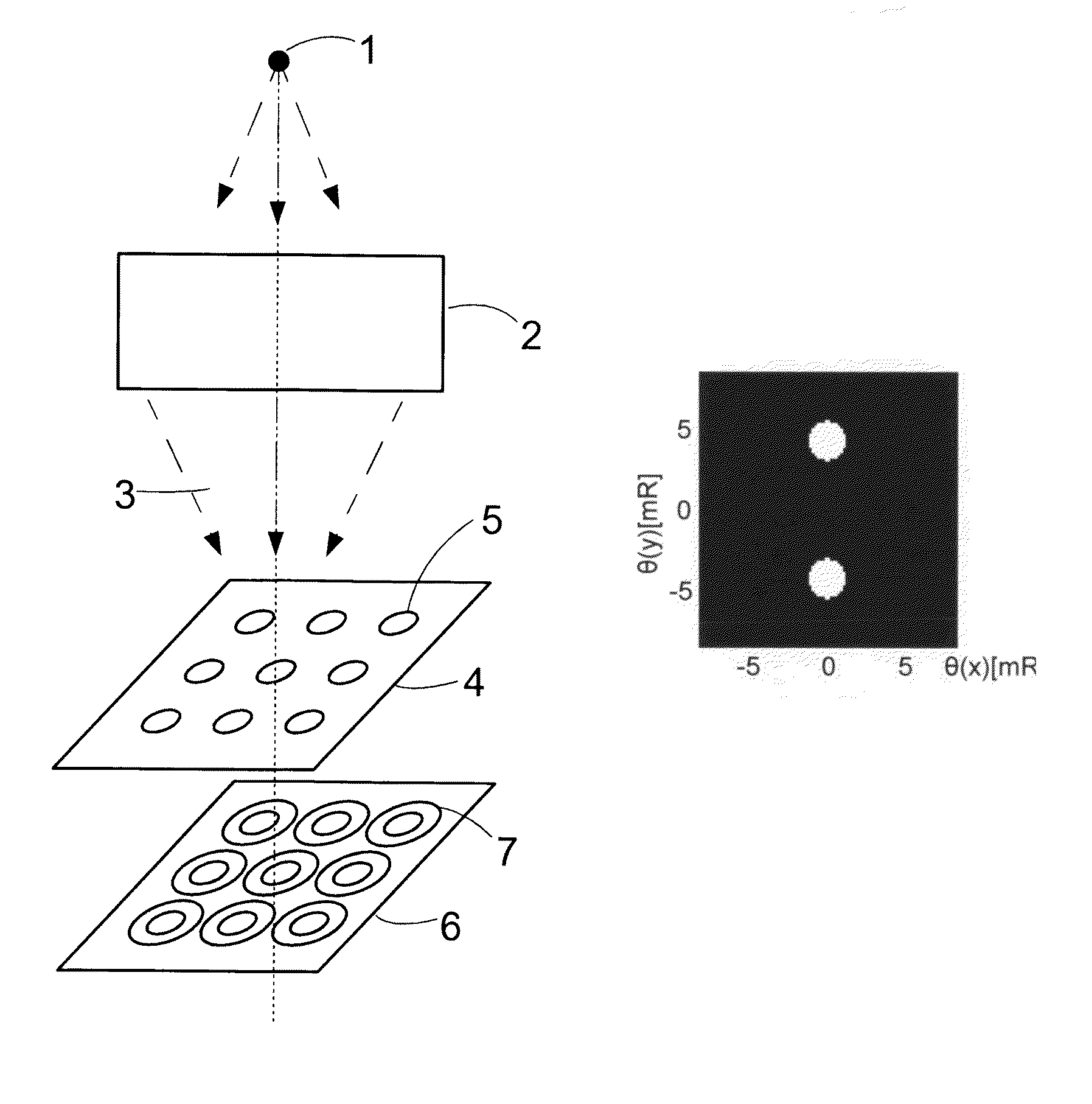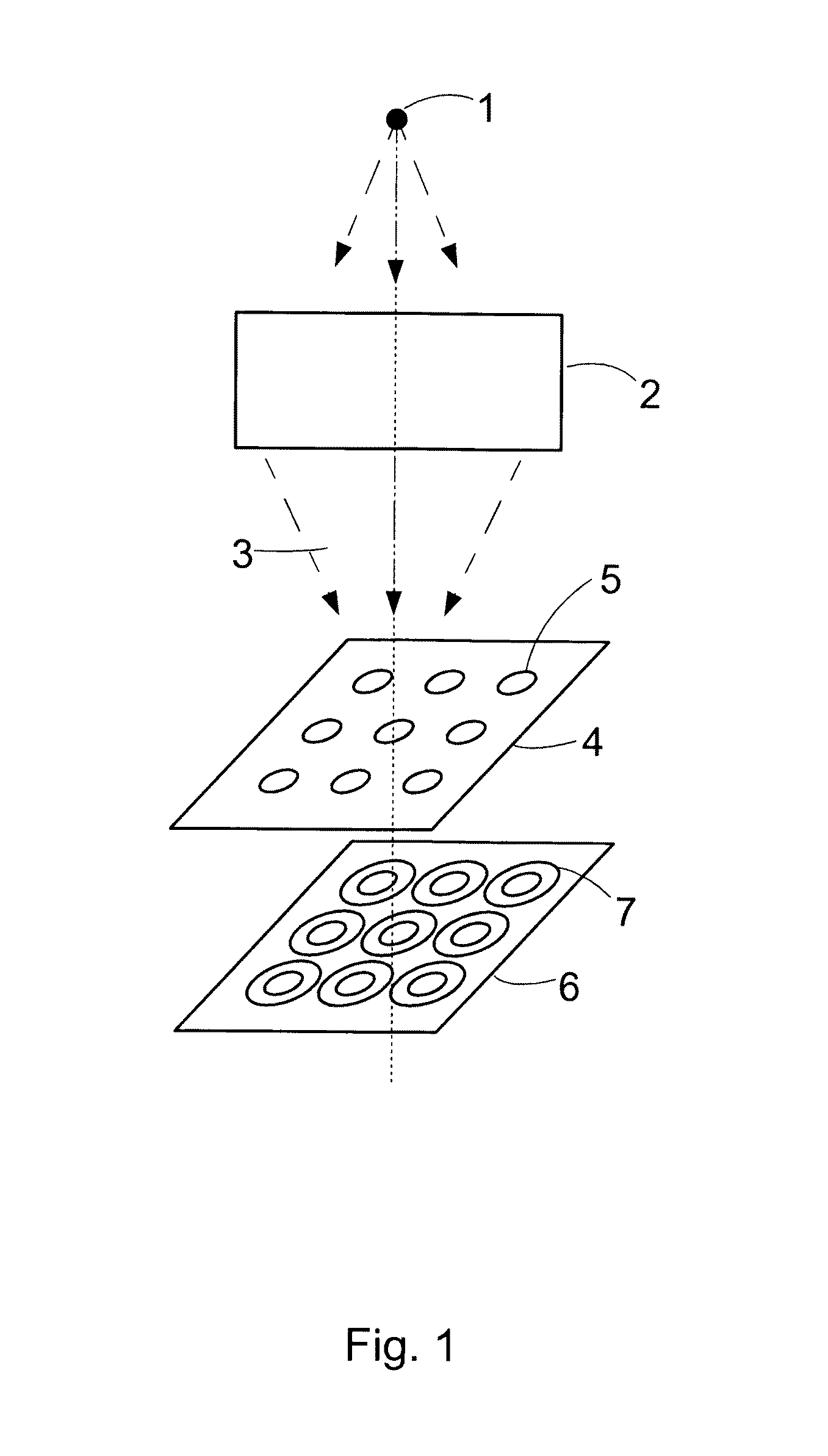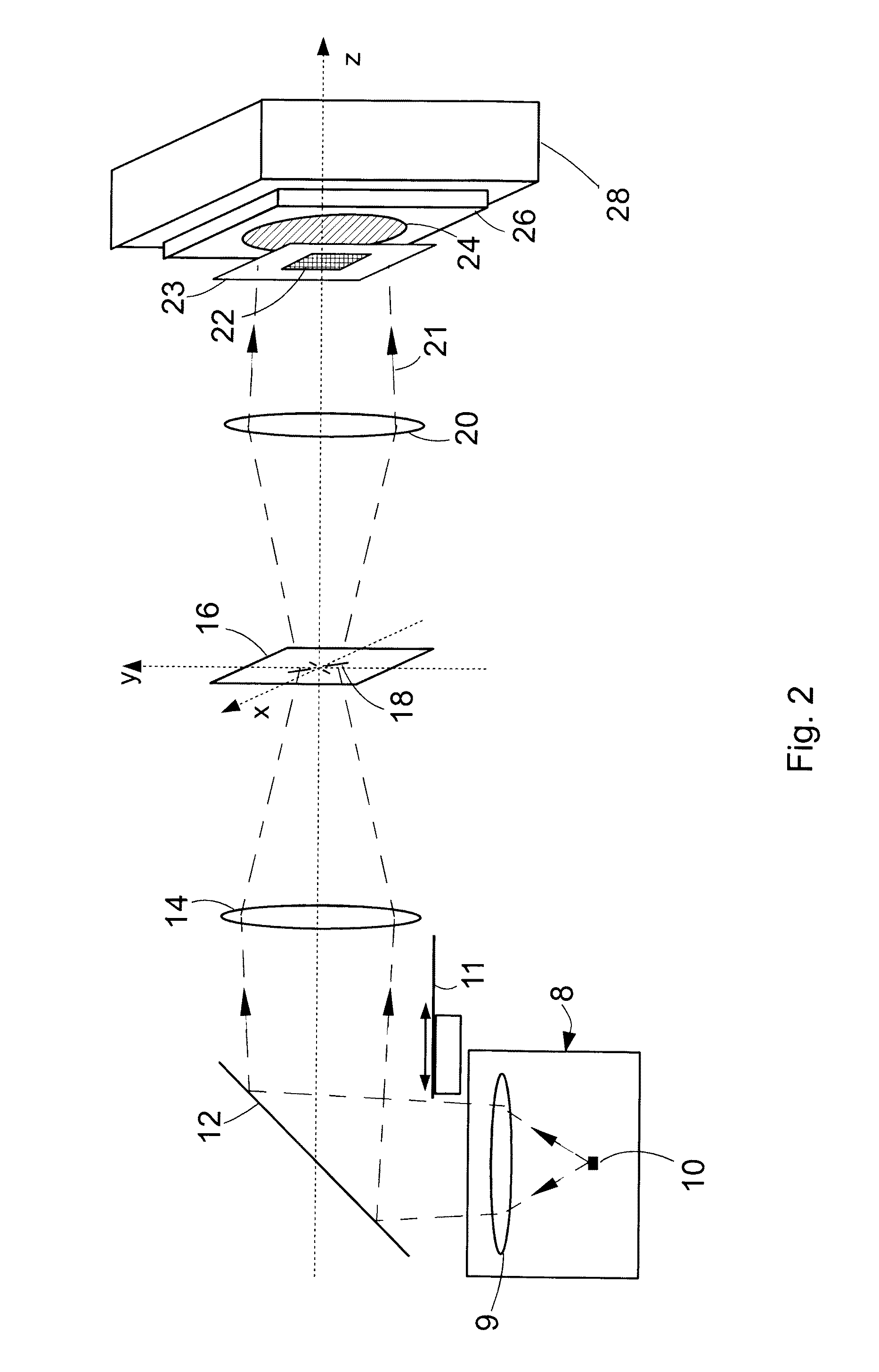Lithographic fabrication of general periodic structures
a general periodic structure and lithography technology, applied in the field of photolithography, can solve the problems of no gain in resolution with respect to the mask, limited resolution, and very sensitive distance distribution of the intensity distribution of the imaged pattern, and achieves a large depth of focus, a large range of applications, and a high degree of control over the intensity distribution.
- Summary
- Abstract
- Description
- Claims
- Application Information
AI Technical Summary
Benefits of technology
Problems solved by technology
Method used
Image
Examples
first embodiment
[0063]With reference to FIG. 2, which shows the present invention, a commercially available 500 W mercury-xenon arc lamp unit 8 is employed as the light source. Its generates a broad spectrum of light including a component in the deep ultra-violet (DUV). The lamp unit 8 has a condenser lens 9 with a focal length ˜50 mm that produces a 40 mm-diameter beam with good uniformity of intensity. Since the effective size of the arc 10 in the lamp unit 8 is ˜2.5 mm×2.5 mm and the arc 10 is located in the focal plane of the condenser lens 9, the range of angles of the light rays in the output beam from the lamp unit 8 is ˜±25 mR. After passing through an open electronically controlled shutter 11, the beam is incident on a dielectric mirror 12 that is highly reflective in the spectral range ˜220-260 nm and highly transmissive outside of this range. The resulting beam of DUV light with a bandwidth ˜40 nm that is reflected by this mirror 12 illuminates a lens 14 with focal length 100 mm which fo...
second embodiment
[0080]In the case of the second embodiment, exposure sequences using the discrete and continuous schemes are devised to generate the angular distributions represented by FIGS. 7a, 8a, 9a, 10a, 11a and 12a. Similarly, before illuminating with each of the angular distributions, an unexposed photoresist coated wafer 48 is loaded to the chuck 50 and positioned so that it is substantially parallel to the pattern mask 46 and separated from it by a distance of ˜60 μm. During the exposure of the wafer to each angular component, the wafer is longitudinally displaced with respect to the pattern mask by a distance of ˜7.5 μm. This value corresponds to the separation between successive Talbot planes, as determined using equ. (1) for the values of pattern period and illumination wavelength concerned, so that each angular component exposes the wafer to the entire range of lateral intensity distributions between successive Talbot planes.
[0081]The resultant, or net, image that illuminates the photo...
PUM
 Login to View More
Login to View More Abstract
Description
Claims
Application Information
 Login to View More
Login to View More - R&D
- Intellectual Property
- Life Sciences
- Materials
- Tech Scout
- Unparalleled Data Quality
- Higher Quality Content
- 60% Fewer Hallucinations
Browse by: Latest US Patents, China's latest patents, Technical Efficacy Thesaurus, Application Domain, Technology Topic, Popular Technical Reports.
© 2025 PatSnap. All rights reserved.Legal|Privacy policy|Modern Slavery Act Transparency Statement|Sitemap|About US| Contact US: help@patsnap.com



